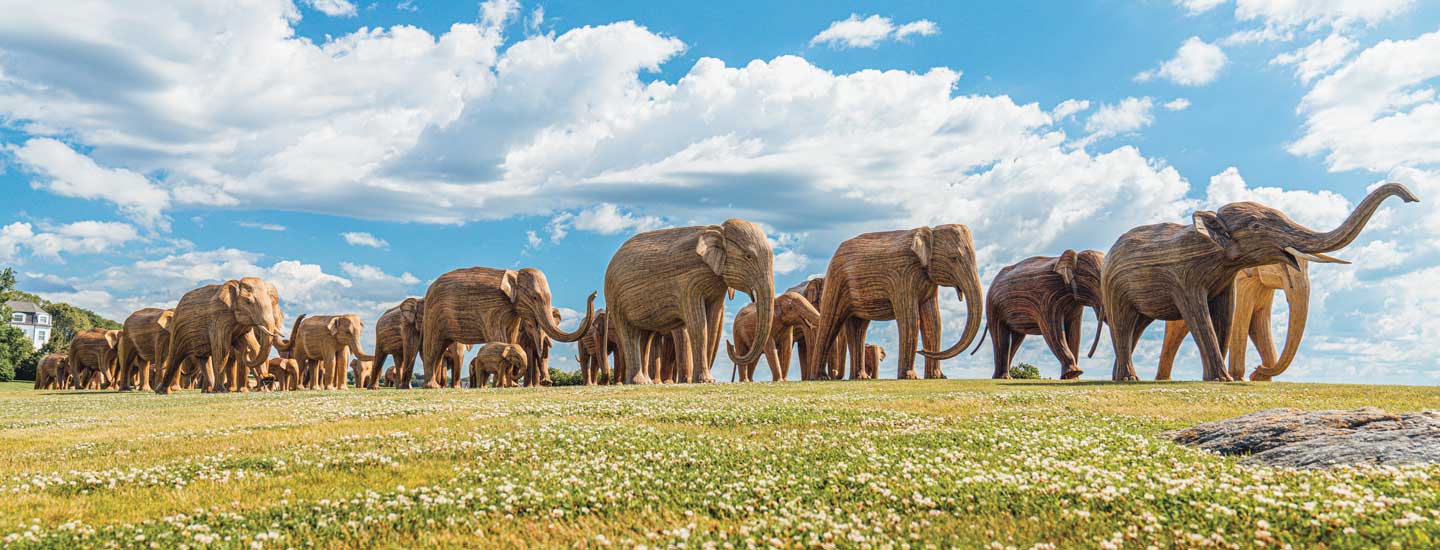Jim McMahon/Mapman®
What has 200 eyes and 400 legs, and doesn’t make a sound? This herd of Indian elephants!
The 100 life-sized sculptures are part of a traveling exhibit from India called “The Great Elephant Migration.” The goal is to raise awareness about how humans and animals can share land and resources.
In India, encounters between humans and elephants have become more common as the human population has grown. In 2023, India became the world’s most populous nation, with more than 1.4 billion people. In addition, an invasive shrub has been overtaking the elephants’ habitat and the plants they eat. This forces the elephants into urban areas to find food.

